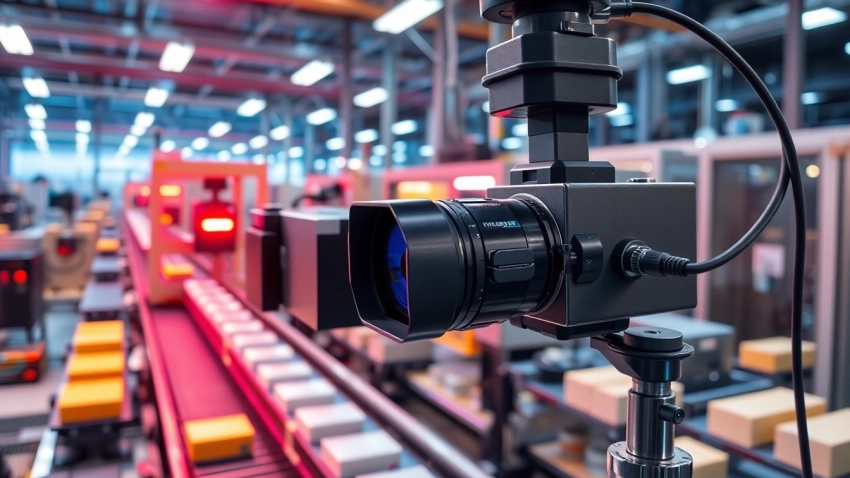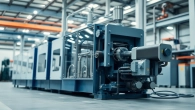
Understanding Machine Vision: Key Concepts, Applications, and Benefits
What is Machine Vision?
Defining Machine Vision Technology
Machine vision (MV) is a revolutionary technology that allows machines and computer systems to interpret visual information much like the human eye does. This involves the usage of hardware and software technologies to enable automated inspections, analysis, and control of processes in various industries. Commonly employed in manufacturing, robotics, and quality control, machine vision integrates imaging technologies with advanced algorithms to achieve tasks that are not only faster but often more accurate than human capability.
Core Components of Machine Vision Systems
A machine vision system generally consists of three core components: hardware, software, and lighting.
- Cameras: The most crucial hardware in a vision system, which captures images of the objects being analyzed.
- Lighting: Optimal lighting is essential as it significantly enhances image quality, ensuring that features are visible and distinct.
- Processing Hardware and Software: The captured images are processed using complex software algorithms that analyze, interpret, and make decisions based on the visual data. These can include neural networks and other forms of artificial intelligence.
Applications of Machine Vision in Industry
Machine vision systems are versatile and can be implemented across various sectors, including:
- Quality Control: Industries use machine vision for automatic defect detection, ensuring products meet quality standards before reaching the customer.
- Guidance Systems: In manufacturing, MV systems can guide robots or machines in assembly and packaging processes, improving accuracy and efficiency.
- Data Collection and Analysis: MV systems often collect large data sets which can be analyzed to gain insights into product lifecycle and manufacturing processes, allowing for continuous improvements.
Machine Vision vs. Computer Vision
Differences Between Machine Vision and Computer Vision
While often mentioned interchangeably, machine vision and computer vision differ in their scope and applications. Machine vision is typically focused on industrial applications, involving specific tasks like product inspection and analysis. Computer vision, on the other hand, encompasses a broader spectrum which includes understanding images in context, such as facial recognition and environmental monitoring.
Use Cases for Each Technology
Machine vision excels in environments where automated inspections are vital—such as in assembly lines—while computer vision is used more in context-driven applications like augmented reality and autonomous driving. For instance, while a machine vision system may detect a defect in a car part on an assembly line, computer vision can help an autonomous vehicle interpret traffic signals on the road.
Complementary Applications in Automation
Both technologies can complement one another. For example, in autonomous manufacturing, machine vision systems can provide real-time inspection and feedback, while computer vision can enhance situational awareness by understanding broader environmental cues.
Principles of Machine Vision
How Machine Vision Works
At its core, machine vision starts with image acquisition. The system captures images of objects using a camera and then processes these images through various algorithms to extract meaningful information that can be used for decision making.
Image Acquisition and Processing Techniques
Image acquisition techniques are critical as they directly affect the quality of the data collected. Techniques such as edge detection, color segmentation, and pattern recognition are commonly used in machine vision systems to identify and categorize objects accurately.
Key Algorithms and Software in Machine Vision
Various algorithms are vital for effective machine vision, including:
- Image Processing Algorithms: These algorithms are responsible for enhancing and analyzing the image to extract meaningful data.
- Machine Learning Algorithms: These can learn from data over time to improve accuracy and decision-making capabilities, thus making the system smarter and more adaptable.
Types of Machine Vision Systems
1D, 2D, and 3D Machine Vision Systems
Machine vision systems can be categorized into several types based on the dimensionality of the data they process:
- 1D Systems: Focuses on line scans and is suitable for applications requiring measurements over a line, such as barcode reading.
- 2D Systems: General imaging systems that provide flat images, commonly used for tasks like surface scanning and defect detection.
- 3D Systems: Utilize depth information for more complex analyses, applicable in industries requiring high precision, like automotive or aerospace manufacturing.
Specialized Systems for Specific Industries
Many sectors have unique needs that require tailored machine vision systems. For example, the pharmaceutical industry requires systems capable of verifying labels and ensuring packaging integrity, while the food industry may focus on systems ensuring product consistency and safety.
Custom vs. Off-the-Shelf Solutions
Organizations can choose between developing custom solutions tailored to their specific requirements or implementing off-the-shelf products that provide rapid deployment with standardized functionalities. Custom solutions offer flexibility and precision, while off-the-shelf solutions can save time and costs.
Implementing Machine Vision Solutions
Steps for Successful Implementation
Implementing a machine vision system involves several key steps:
- Needs Assessment: Identify the specific requirements of your application.
- System Design: Develop a design plan that incorporates all required components.
- Testing: Rigorously test the system to ensure it meets the defined criteria.
- Deployment: Install the system into the operational environment.
- Training: Train staff on how to use and maintain the new system.
Measuring Performance and ROI
To assess the effectiveness of machine vision systems, organizations should track various performance metrics, such as:
- Error Reduction: Rates of defects before and after implementation can indicate the system’s impact on quality control.
- ROI Calculations: Evaluating the costs against the benefits in terms of time saved, reduced labor costs, and increased throughput.
Best Practices for Maintenance and Upgrades
To maximize the lifespan and effectiveness of a machine vision system, adhere to best practices for maintenance:
- Regular Calibration: Ensures continued precision in inspections.
- Software Updates: Keep systems current with the latest features and security patches.
- Training Sessions: Regularly update training to cover new features or user interfaces.












Leave a Reply